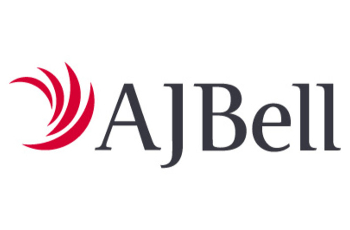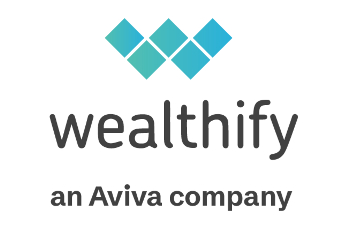Compare Junior ISAs
Pick the best junior ISA to make the most of this year’s tax free allowance.
Investment ISAs put your capital at risk & you may get back less than you originally invested.
- Invest From: £25 pm
- Investment Options: AJ Bell offer a wide range of investments including shares, funds, investment trusts and ETFs (exchange traded funds)
Good to know: Which? Recommended Investment Provider. Invest from £25 pm or invest a lump sum up to £9,000 in the current tax year. AJ Bell offer a wide range of investment options. For a “no hassle” option, you can choose from one of 8 funds and AJ Bell Investments will do the rest. AJ Bell offer a AJ Bell Responsible Screened Growth fund’ focused on companies taking their commitment to the environment and society seriously. Capital at risk.
Show More- Invest From: £20 pm
- Investment Options: A choice of 9 funds, including a Unitised With-Profits fund that comes with a guaranteed minimum payout
Good to know: Take your pick from 9 funds with different levels of risk and reward to create your very own investment strategy for your child. Includes a Unitised With-Profits fund that comes with a guaranteed minimum payout when the child turns 18, provided no switches or withdrawals are made. Welcome Gift: After you start investing in a My Select (Junior ISA) Scottish Friendly will pay £50 into the Junior ISA for your child. Winner of Best Junior ISA Provider 2024 for the 6th year running at the Investment Life and Pensions Moneyfacts Awards. Capital at Risk
Show More- Invest From: From £10 a month or £100 lump sum
- Investment Options: Choice of two funds: Family Balanced International Fund for more cautious long-term investors, or Family Charities Ethical Trust Fund for more adventurous long-term investors
Good to know: Invest up to £9,000 per year (current tax year limit). Also available for zero fee Junior ISA transfer held elsewhere, or child trust fund transfer. Simple choice of two funds: one for more cautious investors and one for those who are comfortable taking more risk. Manage your junior ISA 24/7 with their simple online account. OneFamily is an award-winning investment provider with over 45 years’ experience in helping families make the most of their money. OneFamily is owned by members for members, which means they don’t have shareholders to pay – so they can reinvest profits for good. To open a One Family JISA, the child must be under the age of 16 and funds cannot be withdrawn until the child turns 18. Annual Management Charge of 1.5%. OneFamily’s Junior ISA is a stocks and shares junior ISA. That means the money that you pay in goes into a fund that’s invested in the stock market. This gives your money good potential to outgrow interest rates, but there is a risk that its value could go down, which would mean your child getting back less than has been paid in. Capital at risk.
Show More- Invest From: From £1
- Investment Options: Choose from one of five investment styles based on risk, and a team of experts build your child’s Junior ISA, choosing which investments to buy and managing them on your behalf
Good to know: Junior ISA built and managed for you matched to your level of risk. Invest up to £9,000 in the current tax year. No minimum investment, invest from just £1. Raise, lower, or stop and restart your payments any time you like. Available for children under 18. The value of investments and any income can fall, so the Junior ISA could return less than you invest. Returns on investment funds are not guaranteed. Capital at Risk
- Invest From: £25 pm
- Investment Options: Choose from more than 40,000 UK and global investment options for your child's ISA
Good to know: ii offer a flat fee service which over time could save you money compared to platform providers who charge on the value of investments held. ii offer ready made funds including their ethical funds which allows you to invest in line with your principles covering environmental, social and governance factors. Capital at Risk
- Invest From: £10 pm
- Investment Options: Is an insurance based Junior ISA which invests in stocks and shares via a With-Profits pooled fund
Good to know: Your child’s money will be invested through a fund manager & will be invested primarily in stocks and shares, with the aim of achieving higher growth over the long-term than might be available through a cash-based Junior ISA. Open a Junior ISA for your child and get rewarded too. . Capital at risk. Please note: As with all investing, your capital is at risk you may get back less than you have put in. The value of the ISA will depend on the performance of the investments and any bonuses cannot be guaranteed. Additionally, if investment conditions are poor, we may apply a Market Value Reduction (MVR)
Show More- Invest From: £25 pm
- Investment Options: Invest in over 3,000 funds, UK and overseas shares, investment trusts and ETFs
Good to know: With an HL Junior Stocks and Shares ISA, you can choose investments for your child including UK and overseas shares, Investment trusts, bonds and exchange-traded funds (ETFs). HL have over 1 million clients who trust them for their investments. Capital at risk
- Invest From: £20 pm
- Investment Options: Choose either a ready made portfolio, or DIY with a choice of different funds
Good to know: Choice of ‘Ready-made’, an easy start option of investing in a single fund. These ready-made options could be an ideal choice to begin investing for your child. Alternatively choose from a selection of 9 funds to choose from, International Ethical Fund, so you can tailor your child’s investment, whether that is investing in just one, a mixture of all 9 or somewhere in between. Winner of Best Junior ISA Provider 2024 for the 6th year running at the Investment Life and Pensions Moneyfacts Awards. Capital at Risk. *Into the Junior ISA for your child.
Show More- Invest From: £10
- Investment Options: Allocate your savings between a cash money market fund / shares fund from L&G and Fidelity
Good to know: Rated the Best Junior ISA two years in a row at the Good Money Guide awards. Beanstalk app is free to download and use. The only charge is an annual fee of 0.5% on the value of any investments, one of the lowest around. Rated excellent on Trustpilot. Capital at Risk
What is a junior ISA?
The current 2025/26 Junior ISA allowance is £9,000.
Junior ISAs are an initiative by the Government to help parents save for their children’s future. Launched in November 2011, junior ISAs offer tax-free savings and investments.
Each eligible child is allowed to have one cash ISA and one stocks and share ISA at any time.
Transfers are permitted between cash and stocks and shares junior ISAs, or to another junior ISA provider.
Children who were born between 1st September 2002 and 3rd January 2011 will already have a Child Trust Fund, and are therefore not eligible for a junior ISA.
Who is permitted to open a junior ISA?
ISAs can be opened by anyone who has parental responsibility for an eligible child.
One ISA can be opened per child. Management of the ISA passes to the child when they turn 16. However, funds remain inaccessible until the child turns 18, after which they can either withdraw the funds, or have their account roll over into an adult ISA.
What are the rules surrounding junior ISAs?
In terms of rules and regulations, junior ISAs operate on a similar principle to regular adult ISAs.
It’s permissible to switch providers, but only one junior ISA can be held by each child at a time. Unlike Child Trust Funds, junior ISAs don’t involve any Government contribution.
Each year there is a junior ISA allowance. This allowance can either be put into a junior cash ISA or divided between a junior stocks and shares ISA and a junior cash ISA in whatever proportion you wish.
What are the advantages of junior ISAs?
- Junior ISAs provide parents, friends and family members with a convenient, tax-efficient way to save for a child’s future.
- The money saved in a junior ISA stays tax-free once the child reaches the age of 18.
- The money is locked away until the child turns 18, which stops your teenager from being tempted into spending it on unimportant items.
- If you want to save an annual amount for your child that generates over £100 in yearly interest, a junior ISA ensures that this interest isn’t taxed.
What are the disadvantages of junior ISAs?
- Once your child reaches 18, the money is theirs to spend or save as they wish. If you’ve got a specific savings goal in mind for your child – for example, a mortgage deposit – you might be better off setting up a savings account in your own name so that you can ensure the money is used for the purpose you originally intended.
Frequently Asked Questions
Can I open a Junior Cash ISA and a Junior Stocks and Shares ISA at the same time?
Yes, each child can have one Junior Cash ISA and one Junior Stocks and Shares ISA. Their annual allowance of £9,000 is split between each of these accounts and so your total contributions cannot exceed this figure.
Can I withdraw from a Junior Stocks and Shares ISA?
No withdrawals are allowed until your child is 18. They can then make withdrawals at their own discretion.
Can you lose money in a Junior Stocks and Shares ISA?
Yes, your investment can increase and decrease in value.
How do I add money to a Junior Stocks and Shares ISA?
You can top up a Junior Shares ISA online, via your mobile app, over the phone, or by post with a cheque.
You can add money with a lump sum or regular direct debit.
What happens to a Junior Stocks and Shares ISA when my child turns 18?
Your child’s Stocks and Shares JISA will automatically transfer to a standard Stocks and Shares ISA account in their name.
What is the Junior ISA allowance for 2024/25?
£9,000. This will refresh each tax year and HMRC reviews the amount each time.








